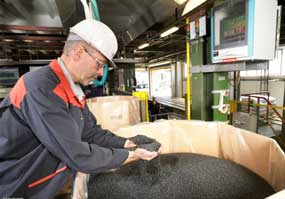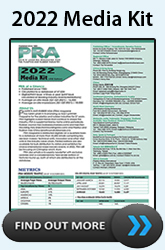Lanxess/Advent to acquire DSM Engineering Materials for EUR3.7 bn; Lanxess to transfer HPM biz into new jv

German speciality chemicals company Lanxess and private equity firm Advent International will acquire the DSM Engineering Materials business (DEM) from Dutch materials group DSM for EUR3.7 billion, which will become part of a new joint venture that will also merge operations of Lanxess’ own high-performance materials business.
The announcement came shortly after DSM said it intended to merge with Swiss peer Firmenich. DSM has been in the process of selling its materials division since September last year, with various contenders for the business. DSM had said it considered the operations non-core as it plans to focus on the health and nutrition business.
The purchase price of DSM’s engineering materials unit will be financed by the joint venture to be set up by Lanxess/Advent via equity from Advent and external debt.
The business represents sales of around EUR1.5 billion with an EBITDA margin of approximately 20%. DEM is a global supplier of high-performance specialty materials that address key market needs in electronics, electrical and consumer goods.
In addition, Lanxess will contribute its High Performance Materials (HPM) business unit to the joint venture. HPM is a supplier of high-performance polymers, which are used primarily in the automotive industry. The business represents annual sales of around EUR1.5 billion with EBITDA pre exceptionals of around EUR210 million.
Advent will hold at least 60% in the joint venture. Lanxess will receive an initial payment of at least EUR1.1 billion and a stake of up to 40% in the future joint venture. Following the transfer to the joint venture, the HPM business will no longer be fully consolidated at Lanxess, but will be included in the consolidated financial statements at equity.
After closing of the deal, Lanxess’ business portfolio will consist of three specialty chemicals segments ie. advanced intermediates, consumer protection, and specialty additives, with the company expected to use proceeds from the sale to reduce its debt and initiate a share buy-back programme with a volume of up to EUR300 million.
Lanxess adds it will have the possibility to divest its stake in the joint venture to Advent at the same valuation earliest after three years. EBITDA could then be significantly higher than today as Advent and Lanxess anticipate substantial synergies resulting from the combination of the two businesses.
The transaction is still subject to approval by the authorities. Closing is expected in the first half of 2023.
Lanxess CEO Matthias Zachert: “Lanxess will once again become significantly less dependent on economic fluctuations. In addition, we as Lanxess will strengthen our balance sheet with the proceeds from the transaction and gain new scope for the further development of our group.”
Ronald Ayles, Managing Partner at Advent International: “Joining forces with Lanxess in this industry transforming transaction is a highlight for Advent as we have built a trusted, long standing relationship and share the highest mutual respect.”
DSM’s Engineering Materials business comprises polyamides (PA6, PA66) as well as various specialty materials (PA46, PA410 and specialty polyesters as well as PPS). Around 2,100 employees work for the division at 8 production and 7 research sites in all relevant markets worldwide. In addition to Europe and the US, the business has a particularly strong presence in Asia.
Lanxess’ High Performance Materials (HPM) business unit is a producer of PA6 and PBT engineering polymers and thermoplastic fibre composites. A total of 1,900 employees at 10 production and 7 research sites worldwide work for HPM. The global production network is characterized by a high degree of backward integration. The backbone is the Antwerp/Belgium site. There, HPM produces not only PA6 polymers but also relevant precursors such as caprolactam and glass fibers.
Furthermore, both DEM and HPM are pioneers in sustainability, offering bio- and recycled-based alternatives across their product portfolios.
For example, Lanxess recently launched a new high-performance polymer that is made from 92% sustainable raw materials, using “green” cyclohexane from sustainable sources such as rapeseed oil or other biomass as a raw material. It is reinforced with 60% by weight glass fibres recycled from industrial glass waste.
The automotive industry is a focus customer sector for the new joint venture. There, the polymers are used, among other things, for lightweight elements in structural parts but also in the interior and often replace metal parts. In this way, weight can be saved and CO2 emissions reduced. An important growth area is electromobility. Here, polymers are used, for example, in the construction of battery and charging systems, electronic control systems and power electronics.
In addition, the materials are used in the electrical and electronics industry, for example in components for smartphones, IT and household appliances.
(PRA)
Subscribe to Get the Latest Updates from PRA Please click here
©2022 Plastics and Rubber Asia. All rights reserved.

©2022 Plastics and Rubber Asia. All rights reserved.
Home Terms & Conditions Privacy Policy Webmail Site Map About Us



















